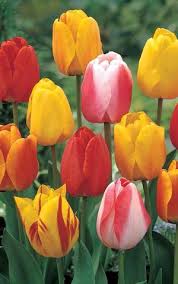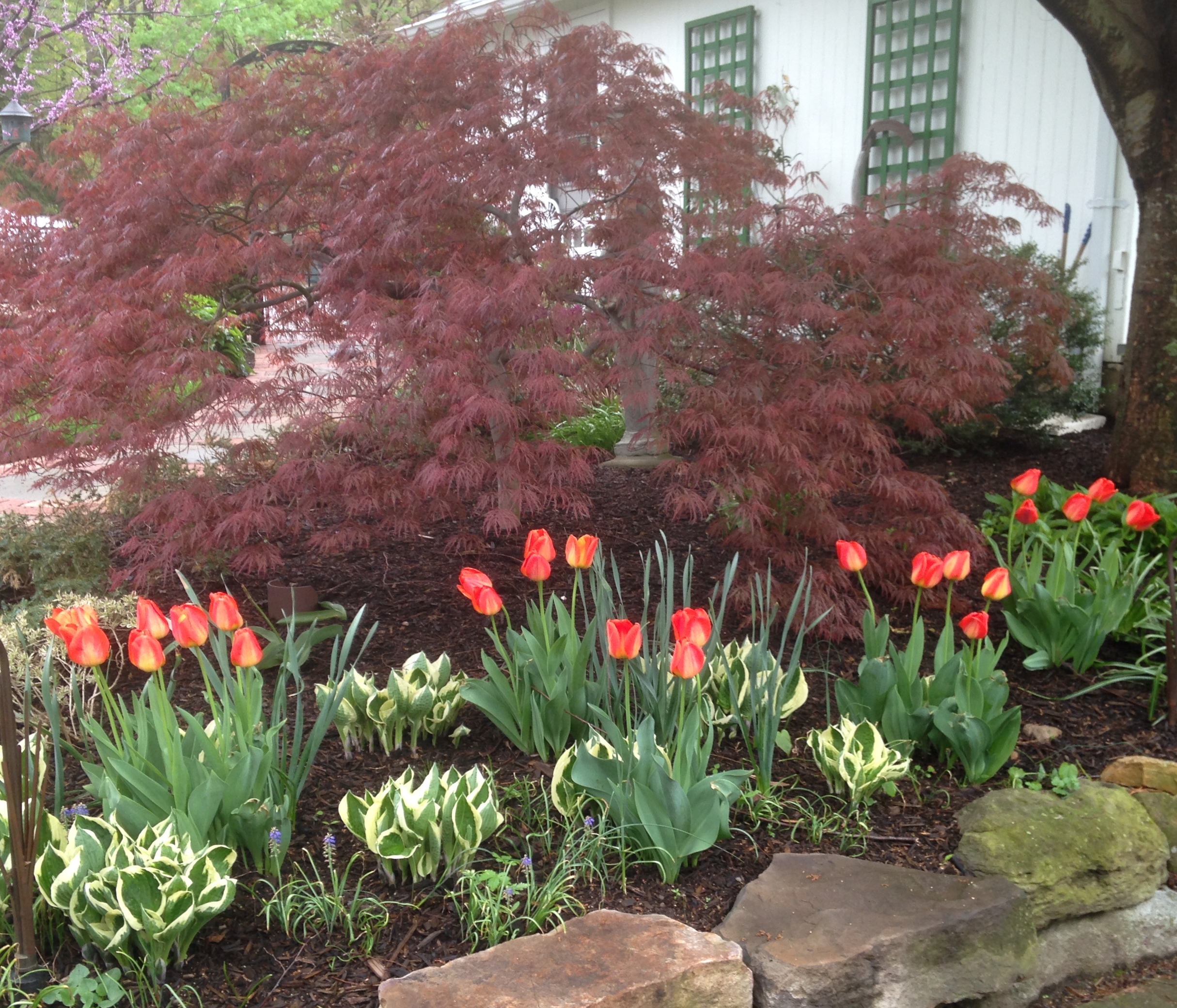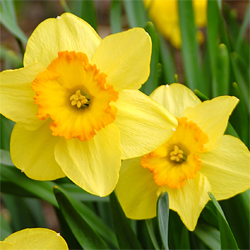HOW TO PLANT TULIPS
When to Plant: Tulip bulbs should be planted in mid to late fall, any time after the first frost and before the ground freezes. For best results, plant the bulbs within a month after you receive them.
Depth and Spacing: Plant tulip bulbs 6″ to 8″ deep and 4″ to 5″ apart on center. You may plant the bulbs individually, or can dig out a larger area and plant a number of bulbs at once. Position the bulbs with the pointy end up and then cover them with soil. Fall and winter rains usually provide adequate moisture. Water only if the weather is very dry.
Planting Tips: Planting tulips side by side in a single row looks stiff and unnatural. For best results, plant informal groups of 7 or more bulbs. Rectangular, triangular or oval patterns will make the planting look as full as possible and ensure the flowers are visible from all angles.
CARING FOR TULIPS AFTER THEY FLOWER
Will your tulips come back to bloom again next year? This depends on the type of tulip you planted and the growing conditions in your garden. If the bulbs do produce a second year of flowers, you can expect the blossoms to be smaller and fewer in number. The best way to guarantee an impressive display of tulips every spring is to plant fresh bulbs each fall.
If you treat your tulips as annuals, you can simply remove the entire plant, bulb and all, as soon as the flowers have faded. You can also feel free to cut your tulips for arrangements and enjoy nice long stems with plenty of foliage. Best of all, you get to try new colors and styles, and compose your own unique color combinations every year.
If you want to try getting your tulips to rebloom, here are some tips:
• Darwin hybrids, Emperors and species tulips are less prone to splitting and more likely to rebloom in future years.
• Plant your tulip bulbs in a sunny spot with very well drained soil. Excess moisture encourages splitting.
• Once the bulbs have finished blooming, immediately remove the spent flowers, cutting about 1” below the bloom.
• Allow the stem and foliage to continue growing and producing energy for next year’s flowers. When the foliage has turned yellow, remove it with a gentle tug or cut it back to the ground.








